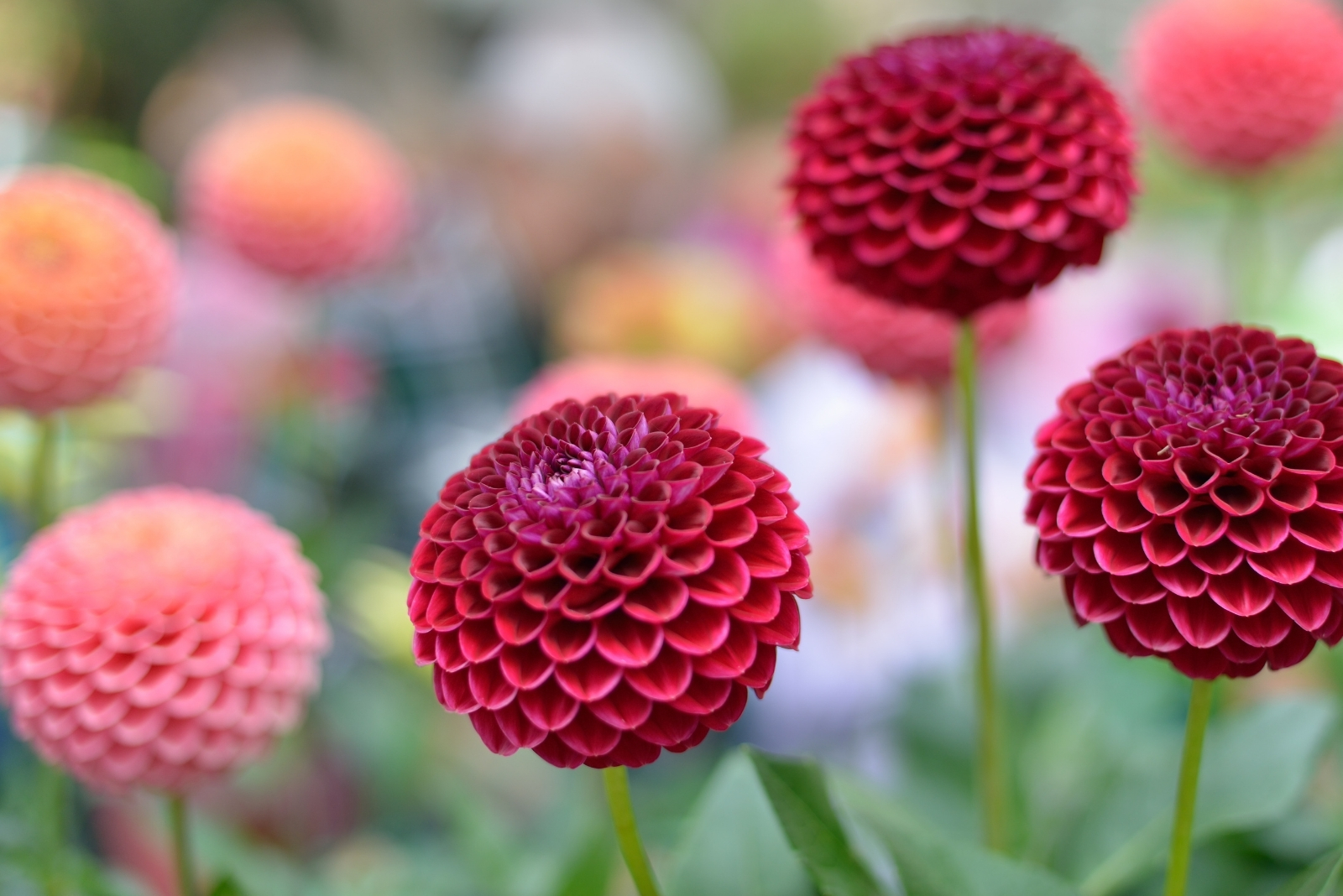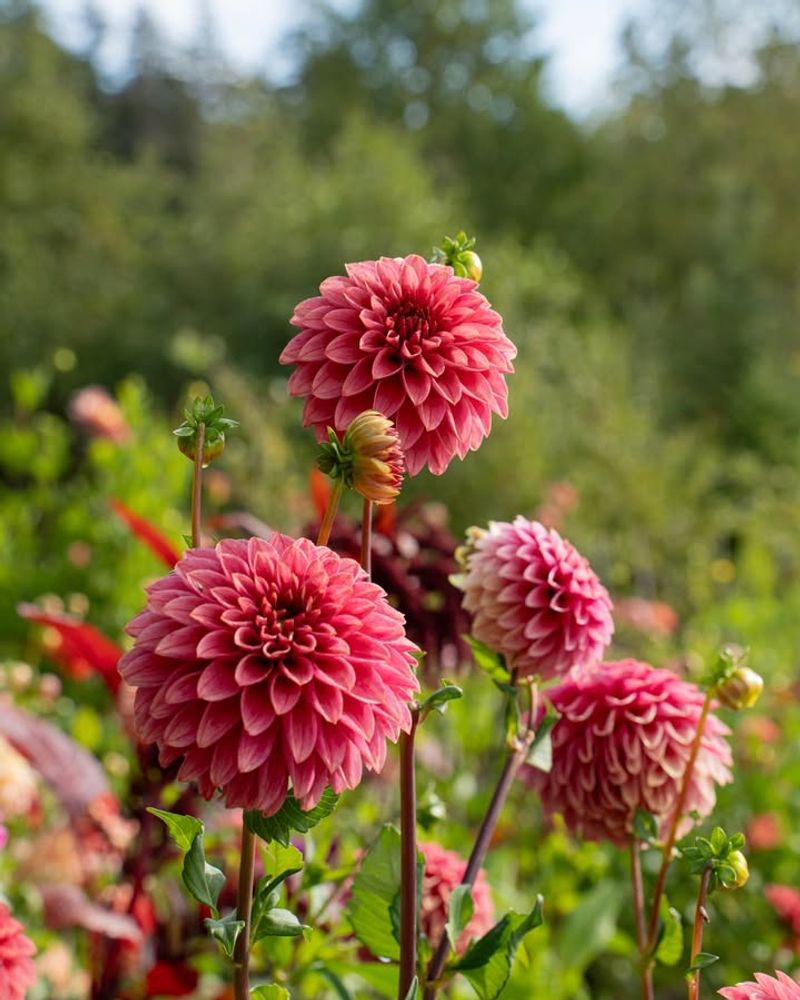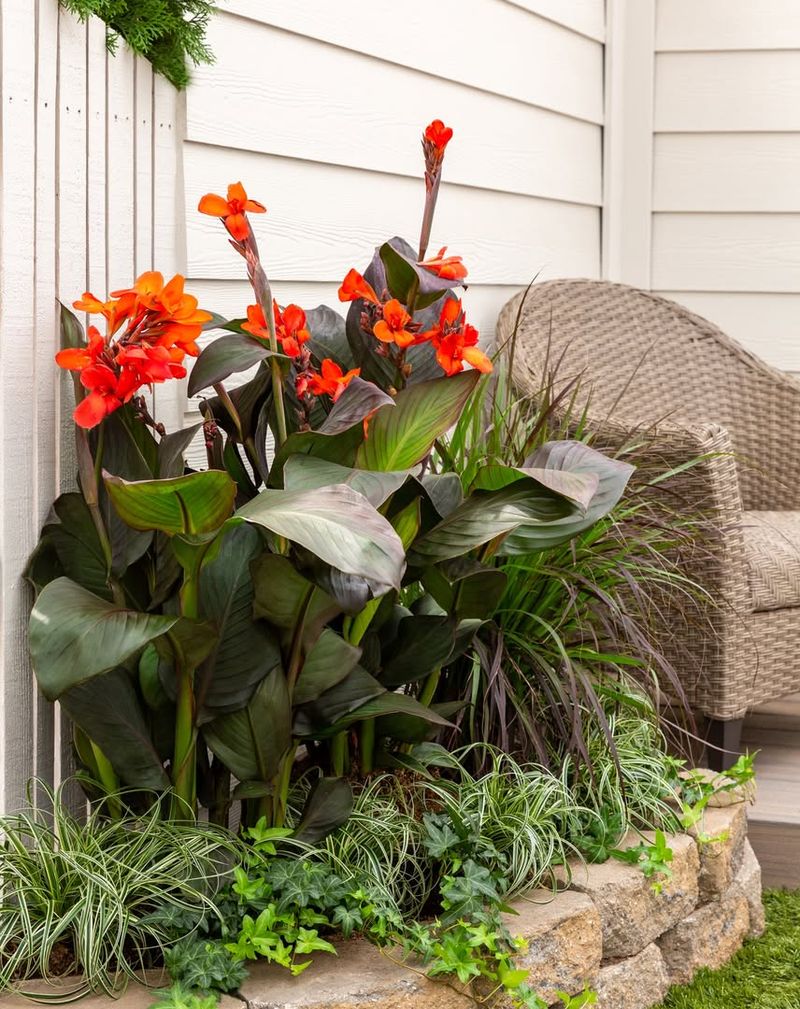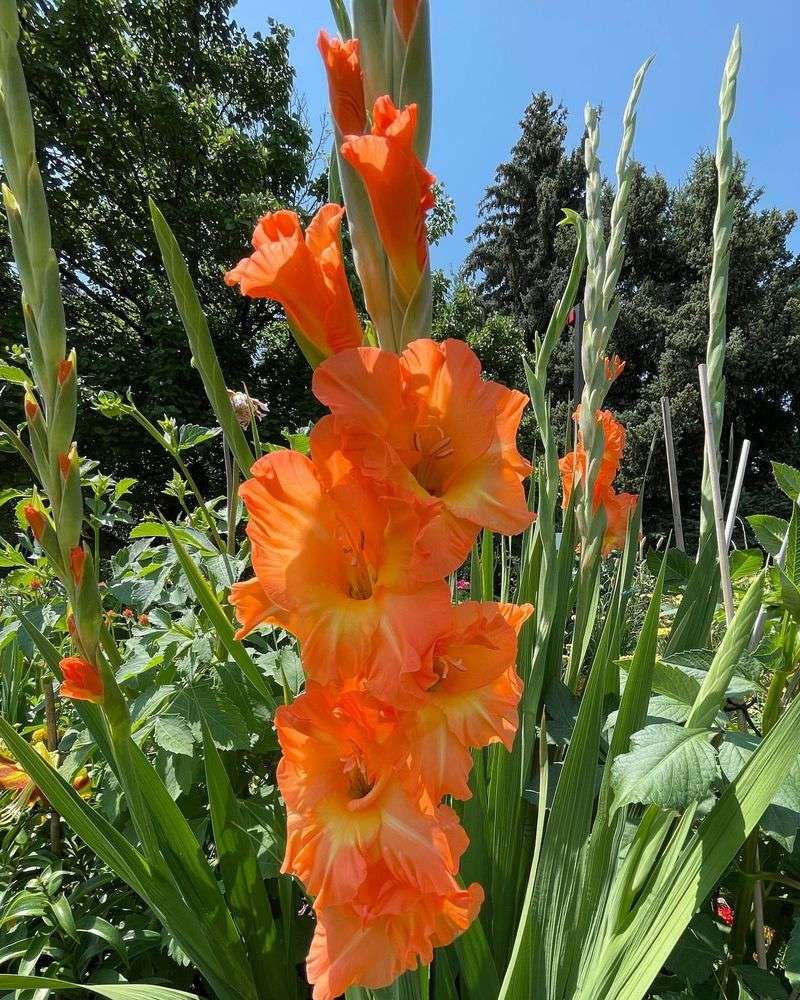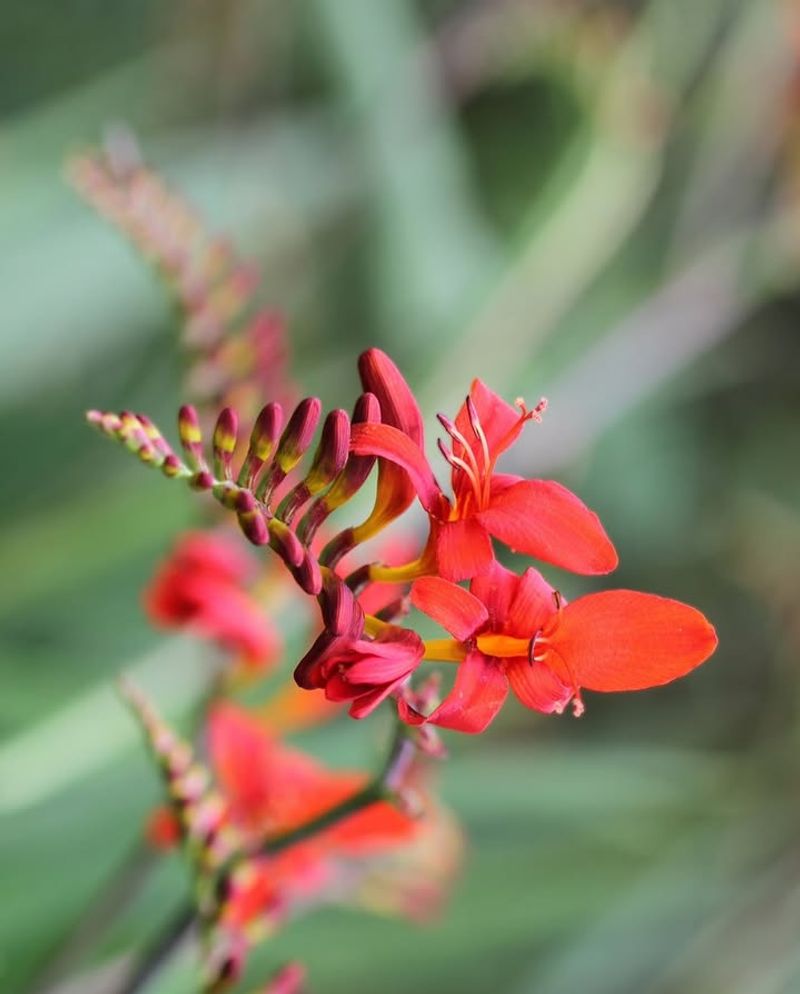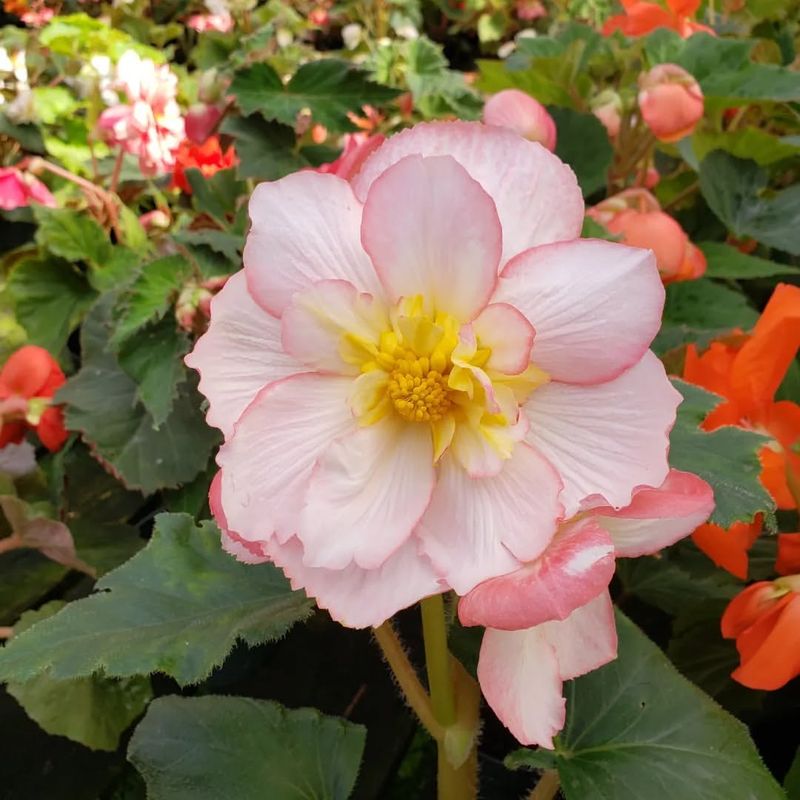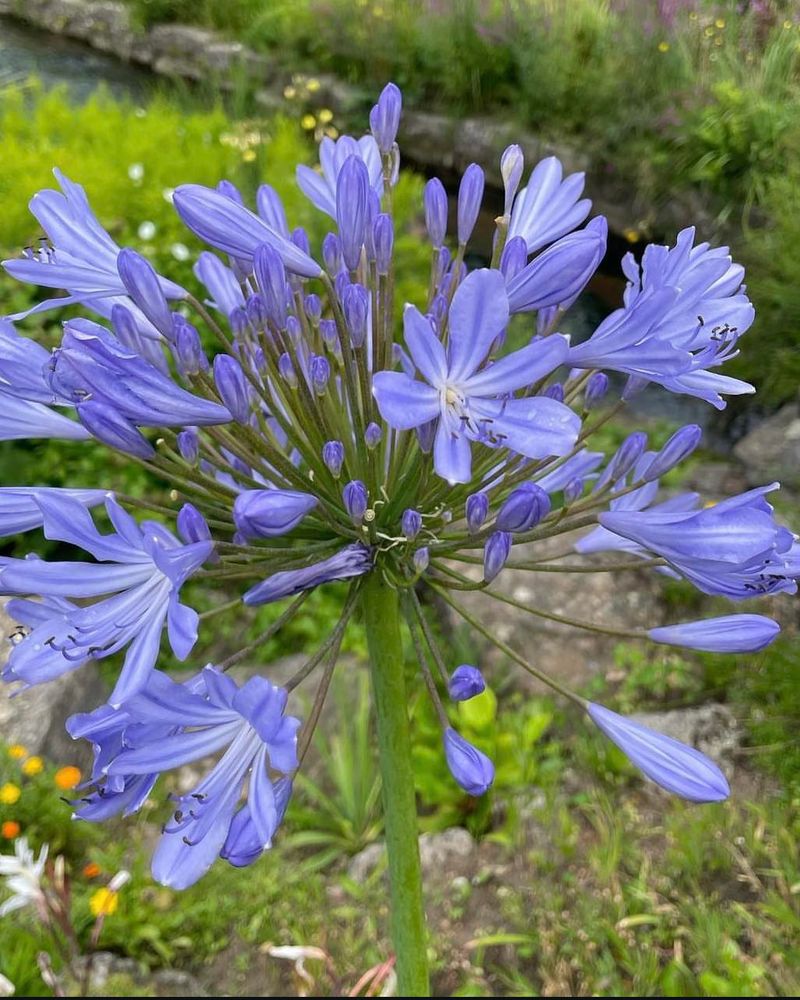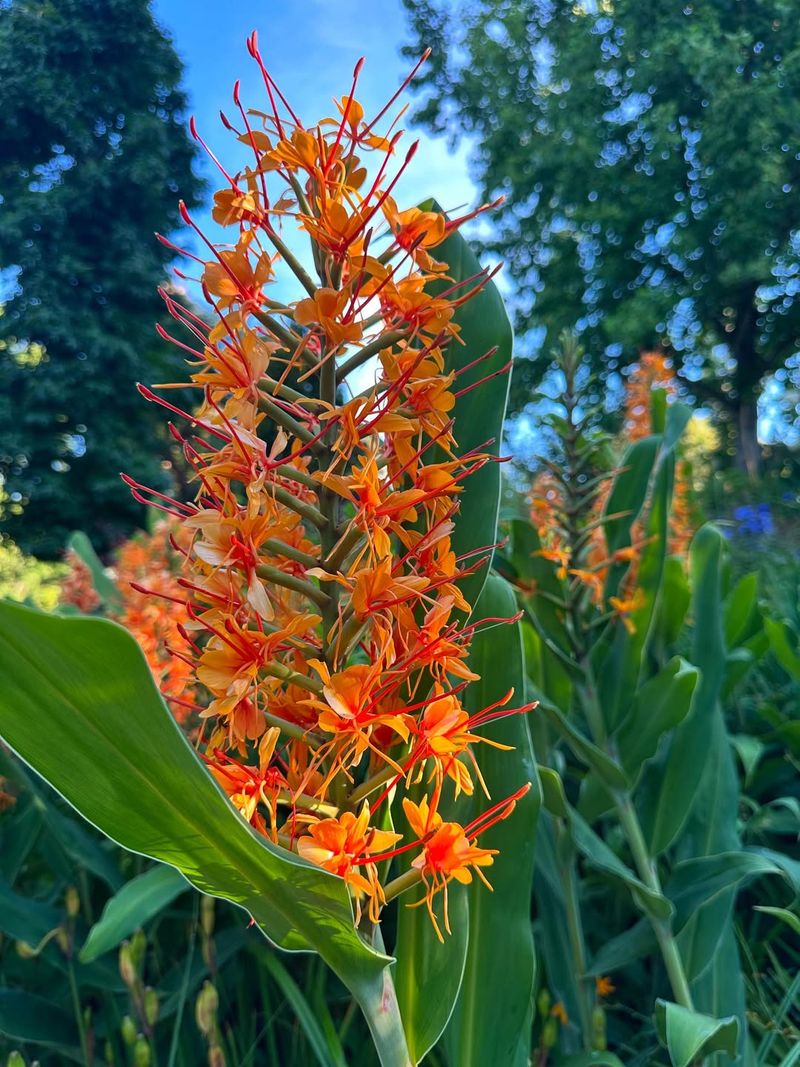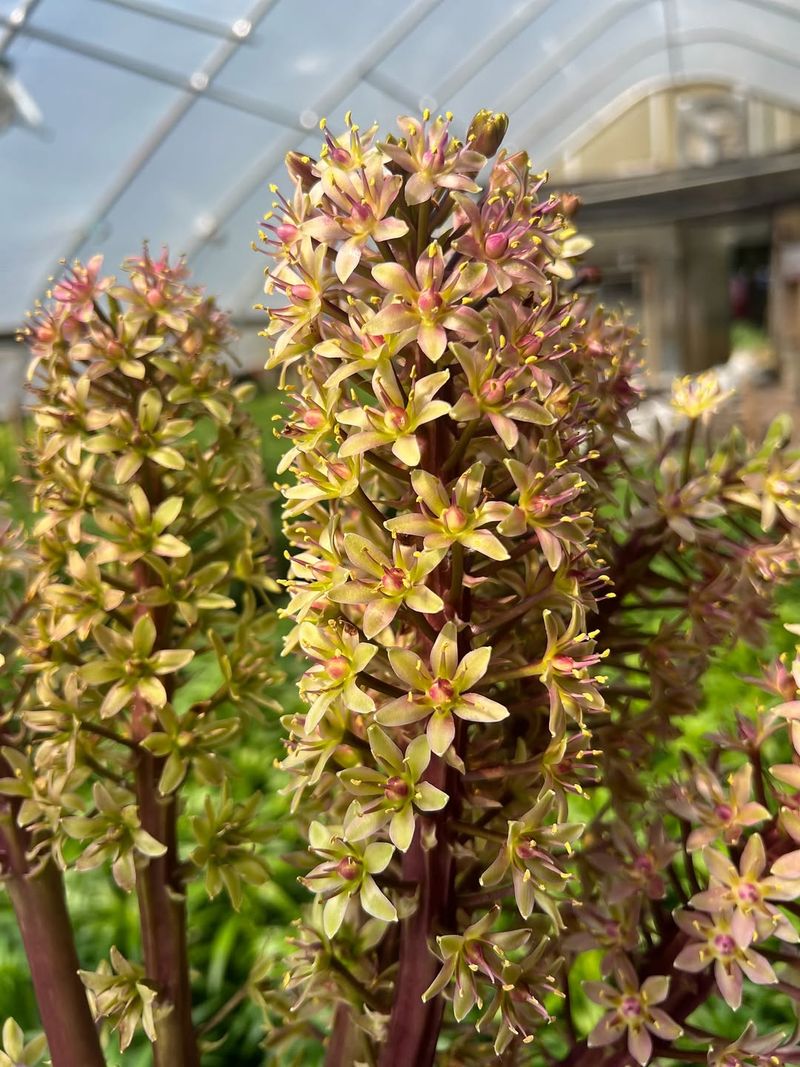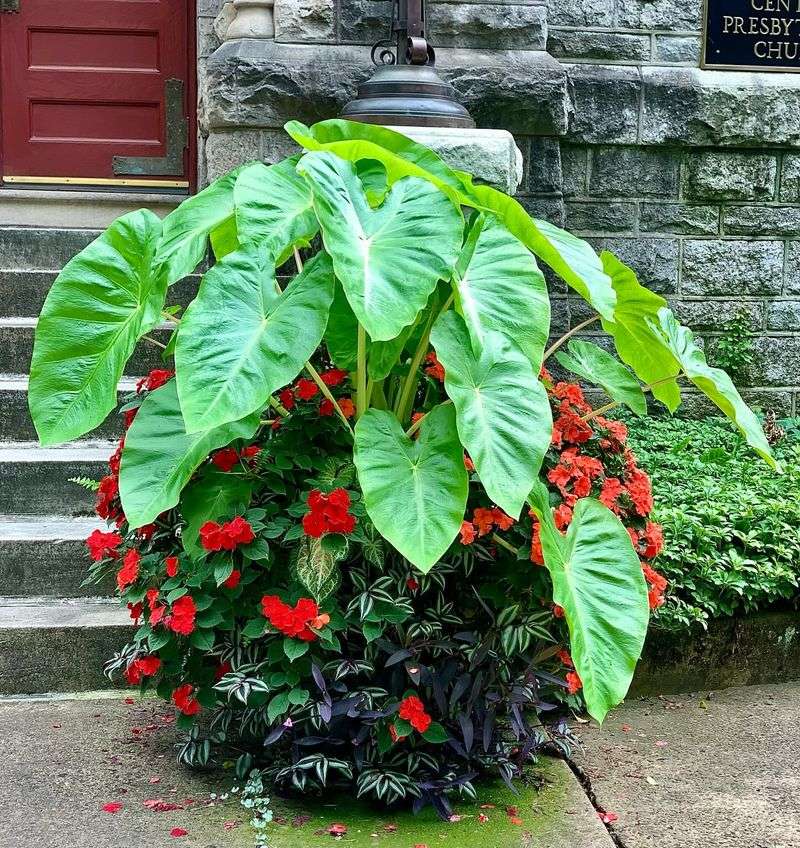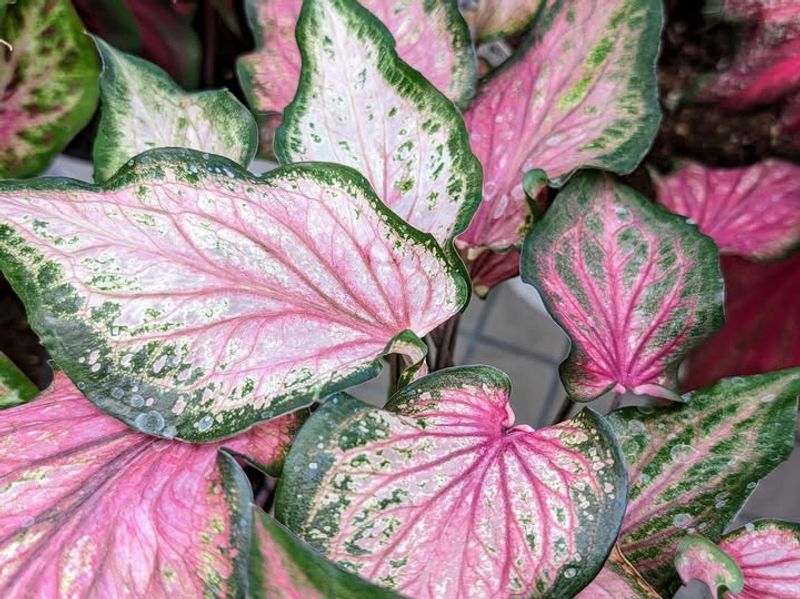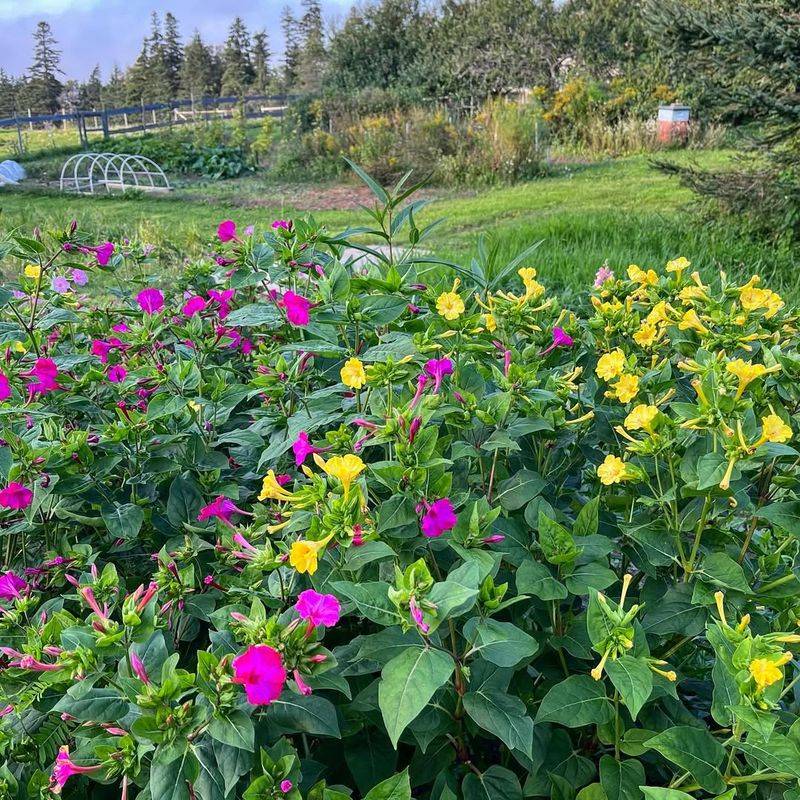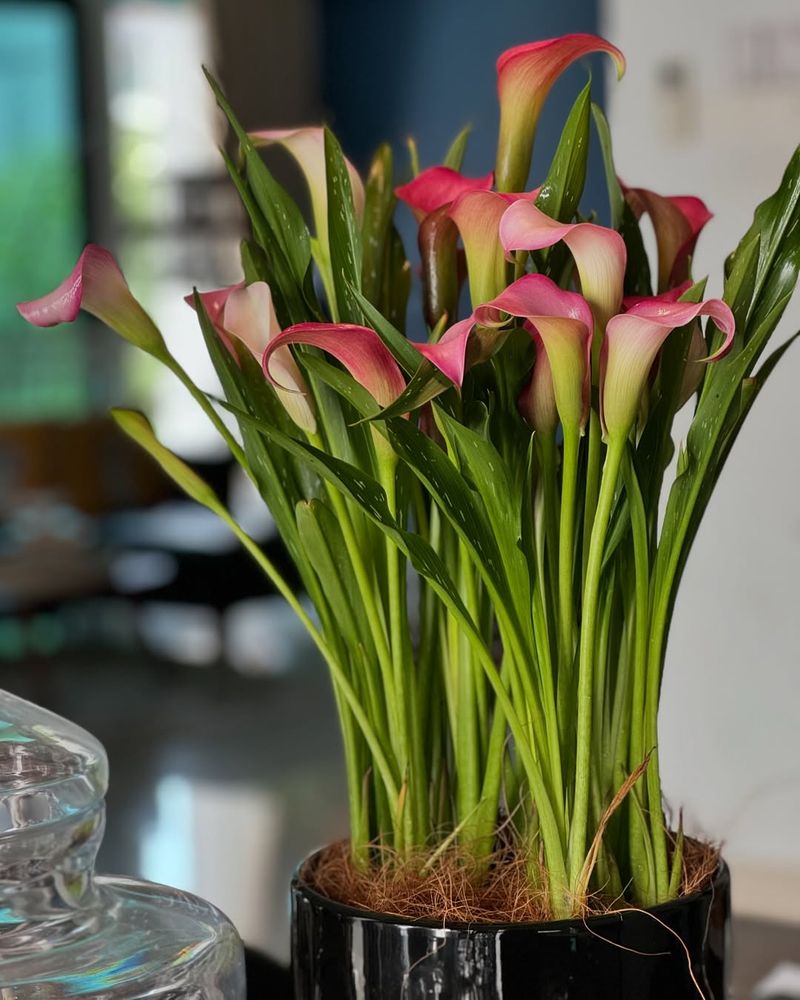Ohio’s fall weather might seem perfect for planting, but not every perennial agrees. Some just don’t take well to the chill and end up struggling once frost sets in.
A few smart planting choices now can save you a lot of trouble later. Here are twelve perennials Ohio gardeners often skip in the fall for good reason.
1. Dahlias
Gardeners across Ohio know that dahlias are stunning showstoppers, but fall planting is a recipe for disaster. Their tuberous roots are incredibly sensitive to freezing temperatures and will rot quickly in cold, wet soil.
Without proper establishment time before winter hits, these beauties simply cannot develop the root system they need. Most experienced gardeners dig up dahlia tubers before the first frost and store them indoors until spring arrives.
Waiting until warmer weather returns gives these vibrant bloomers the best chance at success in Ohio gardens.
2. Canna Lilies
With their bold tropical appearance, canna lilies bring vacation vibes to any garden space. However, planting them in fall throughout Ohio is asking for trouble since they originated in warm climates.
The rhizomes will freeze solid during winter and turn to mush when temperatures drop below freezing. Smart gardeners in the Buckeye State treat them like dahlias, digging up rhizomes after frost kills the foliage.
Store them in a cool, dry place until spring planting season rolls around again for guaranteed success.
3. Gladiolus
These sword-shaped beauties produce magnificent flower spikes that tower over garden beds. Fall planting in Ohio, though, means almost certain death for their tender corms.
Gladiolus corms cannot withstand freezing soil temperatures and will quickly rot when exposed to winter moisture. Many Ohio gardeners make the mistake of thinking these perennials can stay in the ground year-round.
Instead, lift the corms after the first frost, let them dry, and replant them when soil warms up in spring for gorgeous summer blooms.
4. Crocosmia
Hummingbirds absolutely adore the fiery blooms of crocosmia, making them popular choices for pollinator gardens. Unfortunately, Ohio winters are too brutal for fall-planted specimens to survive.
The corms need warm soil and adequate time to establish roots before cold weather arrives. Planting in autumn doesn’t give them this crucial development period.
Even in milder parts of the state, fall-planted crocosmia rarely makes it through winter. Spring planting ensures these stunning perennials have the growing season they desperately need to settle in properly.
5. Begonias
Few flowers offer the showy, rose-like blooms that tuberous begonias deliver all summer long. Planting them in fall across Ohio is pointless since they’re incredibly frost-sensitive perennials.
Their fleshy tubers will rot immediately when exposed to freezing temperatures and winter moisture. Experienced gardeners know to dig up begonia tubers before the first hard freeze hits.
Store them in peat moss or sawdust in a cool basement until spring returns. This simple step protects your investment and ensures spectacular blooms year after year.
6. Agapanthus
Called Lily of the Nile, agapanthus produces gorgeous globe-shaped flower clusters that make stunning focal points. Ohio gardeners who plant them in fall will be disappointed come spring.
Native to South Africa, these perennials cannot tolerate the Buckeye State’s freezing winters without protection. Their fleshy roots freeze solid and die when temperatures plummet.
Even with heavy mulching, fall-planted agapanthus rarely survives Ohio winters. Container growing or spring planting offers better success rates for enjoying these architectural beauties in your landscape.
7. Ginger Lily
Nothing compares to the exotic fragrance that ginger lilies bring to summer evenings in the garden. Planting these tropical treasures in fall throughout Ohio guarantees failure, though.
Their rhizomes are extremely tender and will turn to mush during the first hard freeze. Without months of warm weather to establish strong roots, they stand no chance against winter.
Ohio gardeners should plant ginger lilies in late spring after all frost danger passes. Alternatively, grow them in containers that can be moved indoors when temperatures drop.
8. Pineapple Lily
With their quirky pineapple-shaped flower spikes, eucomis plants always spark conversation among garden visitors. Fall planting in Ohio is a bad idea for these South African natives.
The bulbs need warm soil and several months to develop roots before winter arrives. Cold, wet conditions cause the bulbs to rot before they ever get established.
Smart gardeners in the Buckeye State wait until spring to plant pineapple lilies. This timing gives them the full growing season to settle in and produce their distinctive blooms.
9. Elephant Ears
Elephant ears create instant drama with their enormous, tropical-looking foliage that can reach several feet across. Ohio gardeners who plant them in fall waste their money and effort.
The tubers are extremely frost-sensitive and will die at the first sign of freezing temperatures. Even a light frost can damage or kill newly planted elephant ears.
Treat them as summer annuals or dig up the tubers before frost and store them indoors. Replanting in late spring after soil warms ensures these dramatic plants thrive throughout Ohio summers.
10. Caladiums
Caladiums paint the shade garden with their heart-shaped leaves in brilliant pinks, reds, and whites. Fall planting anywhere in Ohio means certain death for these tropical beauties.
Native to South American rainforests, their tubers cannot survive even mild freezes. Soil temperatures below 60 degrees cause them to go dormant or rot.
Ohio gardeners should plant caladium tubers in late spring when soil has thoroughly warmed up. For continuous color, dig them up before frost and store in a warm, dry location until next year.
11. Four O’Clocks
Named for their habit of opening in late afternoon, four o’clocks offer fragrant blooms in multiple colors. Planting them in fall across Ohio is a waste since their tuberous roots are frost-tender.
While they reseed freely in warm climates, Ohio winters kill the roots before they can establish properly. The tubers need warm soil and time to develop before cold weather strikes.
Spring planting gives four o’clocks the growing season they need. Some Ohio gardeners dig up the tubers and store them, though many simply replant fresh each year.
12. Calla Lilies
Calla lilies bring elegance to any garden with their smooth, trumpet-shaped blooms and glossy foliage. Ohio gardeners should never plant these beauties in fall, though.
Their rhizomes are tender and will freeze solid during winter, turning to mush when temperatures drop. Without adequate establishment time before frost, they cannot develop the roots needed for survival.
Plant calla lilies in spring after all danger of frost has passed in Ohio. Alternatively, grow them in containers that can be brought indoors during cold months for year-round enjoyment.

